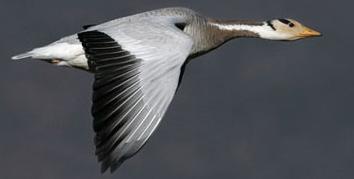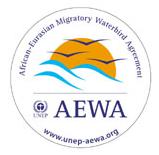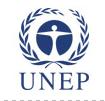World Migratory Bird Day 8th-9th May
Saturday, June 5th, 2010…on the 2nd weekend in May each year
2010 Theme: ‘Save migratory birds in crisis – every species counts!’
Source: http://www.worldmigratorybirdday.org/2010/
Threats to migratory birds and their habitats include:
- Loss (reclamation) and degradation of habitat
- Human disturbance
- Poaching
- Introduced predators
- Invasive plants
- Climate change
About
‘World Migratory Bird Day (WMBD) was initiated in 2006 and is a annual awareness-raising campaign highlighting the need for the protection of migratory birds and their habitats. On the second weekend each May, people around the world take action and organise public events such as bird festivals, education programmes and birdwatching excursions to celebrate World Migratory Bird Day.’
‘World Migratory Bird Day activities take place in many different countries and places, but are all linked through a single global campaign and theme.’
‘Every year WMBD focuses on a different topic; this year’s theme is “Save migratory birds in crisis – every species counts!” – aims to raise awareness on globally threatened migratory birds, with a particular focus on those on the very edge of extinction – the Critically Endangered migratory birds. In line with the International Year of Biodiversity, the 2010 WMBD theme also highlights how migratory birds are part of the biological diversity of our world and how the threat of extinction faced by individual bird species is a reflection of the larger extinction crisis threatening other species and the natural diversity that underpins all life on earth.’
History
‘World Migratory Bird Day was initiated by the African-Eurasian Migratory Waterbird Agreement (AEWA) Secretariat in collaboration with the Secretariat of the Convention on the Conservation of Migratory Species of Wild Animals (CMS) in 2006.’
‘Originally, the idea of designating a day for migratory birds arose in the United States in 1993, when the US Fish and Wildlife Service, the Smithsonian Migratory Bird Center and the Cornell Laboratory of Ornithology initiated celebrations of the ‘International Migratory Bird Day’ (IMBD), which encourages bird festivals and education programmes across the United States and other parts of the Americas. Although this day continues to be successfully celebrated in the western hemisphere, something similar was missing for the rest of the world.’
‘On the occasion of its 10th anniversary in 2005, the African-Eurasian Migratory Waterbird Agreement (UNEP/AEWA) – a United Nations Environment Programme (UNEP) administered environmental treaty, initiated the Migratory Waterbird Days (MWD) which were held in Africa, Europe and parts of Asia. As this event was well received in the African-Eurasian region, the idea arose to broaden the scope into a commemorative day which celebrates the phenomenon of migration and all migrating birds, including waterbirds on a global scale.’
‘Hence, the very first World Migratory Bird Day was launched by AEWA and CMS on the weekend of 8-9 April 2006 on Ms. Kuki Gallmann’s famous wildlife reserve ‘Ole Ari Nyiro’ in Laikipia, Kenya. The central launching event called WINGS was inspired by the phenomenon of bird migration and was attended by a number of international personalities from the worlds of art, business and conservation.’
‘Since then, World Migratory Bird Day (WMBD) has been celebrated in an increasing number of countries and has steadily grown in popularity each year. While the annual WMBD campaigns are prepared and coordinated centrally by the AEWA and CMS Secretariats, national authorities and NGOs worldwide, in particular BirdLife International and its partners, help to encourage individuals and organisations around the world to celebrate World Migratory Bird Day and to incorporate each year’s theme into their awareness-raising programmes and festivals.’
‘Through the help of thousands of committed individuals, organisations and government authorities – World Migratory Bird Day has turned into a truly global commemorative event, which helps turn the world’s attention to the wonders of bird migration and the need for their conservation in a concentrated and global scale each year.’
WMBD 2010 “Save migratory birds in crisis – every species counts!
‘The United Nations declared 2010 to be the International Year of Biodiversity (IYB). This is an appreciation of the value of biodiversity for our lives. However, it is not only a celebration, but also an invitation to take action to safeguard the variety of life on earth. Our planet’s biological diversity is very rich and amazing. It is the result of billions of years of evolution and forms the complex web of life of which we are part and upon which we totally depend. Humankind relies on this diversity, because it provides us with food, fuel, medicine and other essentials which we need every day.’
‘Regardless of that, species are disappearing because of human activities and there are a lot of species that are in danger of becoming extinct. These losses are irreversible and the decline of biodiversity endangers our livelihood. The current rate of extinction is a thousand times faster than the natural one. Normally, only one bird per century becomes extinct, but during the last thirty years 21 bird species disappeared. At the moment 192 birds are classified as Critically Endangered as a result of habitat loss, hunting, pollution, climate change, human disturbance and other reasons. These threats are directly or indirectly man-made. Without immediate action, many of these endangered species will not be here in a few years time. The Balearic Shearwater (Puffinus mauretanicus), for example, is expected to become extinct within a human generation due to fisheries by-catch. And there are several other species which are extremely rare. The population size of Slender-billed Curlew (Numenius tenuirostris), New Zealand Storm-petrel (Oceanites maorianus) as well as Rueck’s Blue-flycatcher (Cyornis ruckii) is under 50 individuals.’
‘Therefore in 2010, the International Year of Biodiversity, World Migratory Bird Day focuses on Globally Threatened Migratory Birds and especially on those thirty-one migratory bird species, which are classified as Critically Endangered in the IUCN Red List. These are birds, which face extinction. Migratory birds rely on several different habitats; they need different locations for breeding and raising their young, and for feeding. Some of them migrate up to thousands of kilometers to find suitable areas and cross many different habitats, regardless of any political borders. Thus, saving migratory birds means saving their required habitats and that benefits other species as well. Because birds are found nearly everywhere and, with more than 10,000 described species, being the best known and best-researched taxon, they serve as vital indicators of distribution and state of biodiversity and the ecosystems they inhabit. If a bird species becomes threatened by extinction it is a clear sign that the conditions of, or the ecosystem itself, have changed and that other species that depend on this ecosystem may be affected as well. Saving every species is therefore essential, because if one species becomes extinct, the whole ecosystem will be affected.’
WMBD 2009 “Barriers to migration”
‘On 9-10 May 2009 World Migratory Bird Day was celebrated in over 50 countries around the world. Under the main theme “Barriers to migration”, 130 registered events took place. These events helped to raise awareness on man-made barriers and demonstrated that obstacles like wind turbines, power lines and tall buildings pose a threat to migratory birds.’
WMBD 2008 “Migratory Birds – Ambassadors for Biodiversity”
‘In 2008, World Migratory Bird Day (WMBD) was celebrated for the third time on 10-11 May 2008. Over 136 activities took place in 59 countries around the world to mark World Migratory Bird Day in 2008 and the events helped spread the idea of migratory birds as messengers for the conservation of biodiversity worldwide.’
WMBD 2007 “Migratory birds in a changing climate”
‘In 2007, World Migratory Bird Day was celebrated in more than 58 countries and with more than 100 different events all across the planet on 12-13 May. The central theme “Migratory birds in a changing climate” helped to focus the world’s attention on the plight migratory birds are facing due to global warming. WMBD activities highlighted the effects that increasing temperatures, altered rainfall and vacillating weather conditions have on migratory birds.’
WMBD 2006 “Migratory birds need our support now!”
‘The first World migratory Bird Day took place on 8-9 April, 2006. At the time, migratory birds were receiving very negative media coverage as a result of them being falsely believed to be the main cause for the spread of Avian Influenza (H5N1) around the world. So the idea arose to use the first World Migratory Bird Day to counter some of the negative and often unbalanced publicity migratory birds were receiving at the peak of the Avian Influenza discussion. For this reason the theme of the first World Migratory Bird Day in 2006 became: “Migratory birds need our support now!”. The centre of the campaign was a launching event called WINGS which took place on the edge of the Great Rift Valley in Kenya and was hosted by Ms. Kuki Gallman, a famous writer and conservationist. Altogether, 68 other WMBD related events took place in all corners of the world to support the launch and the very first WMBD campaign.’
African-Eurasian Waterbird Agreement [AEWA]
About AEWA
The Agreement on the Conservation of African-Eurasian Migratory Waterbirds (AEWA) is the largest of its kind developed so far under CMS. It was concluded on 16 June 1995 in the Hague, the Netherlands and entered into force on 1 November 1999 after the required number of at least fourteen Range States, comprising seven from Africa and seven from Eurasia had ratified. Since then the Agreement is an independent international treaty.
The AEWA covers 255 species of birds ecologically dependent on wetlands for at least part of their annual cycle, including many species of divers, grebes, pelicans, cormorants, herons, storks, rails, ibises, spoonbills, flamingos, ducks, swans, geese, cranes, waders, gulls, terns, tropic birds, auks, frigate birds and even the south African penguin.
The agreement covers 118 countries and the European Union (EU) from Europe, parts of Asia and Canada, the Middle East and Africa. In fact, the geographical area covered by the AEWA stretches from the northern reaches of Canada and the Russian Federation to the southernmost tip of Africa. The Agreement provides for coordinated and concerted action to be taken by the Range States throughout the migration system of waterbirds to which it applies. Of the 118 Range States and the European Union (EU) currently 63 countries (as of 1 February 2010) have become a Contracting Party to AEWA.
Parties to the Agreement are called upon to engage in a wide range of conservation actions which are describes in a comprehensive Action Plan. This detailed plan addresses such key issues as: species and habitat conservation, management of human activities, research and monitoring, education and information, and implementation.
At the fourth Session of the Meeting of the Parties, which took place from 15-19 September 2008 in Antananarivo, Madagascar, a number of important decisions were taken. For more information on Resolutions adopted at MOP4 click here.
Although the Agreement only entered into force a few years ago, its implementation is well underway. The European Union, Belgium, Denmark, France, Germany, The Netherlands, Switzerland and United Kingdom increasingly support the implementation of AEWA. In addition to this support, the GEF council approved the African-Eurasian Flyways Project in November 2003 and its implementation started in July 2006. This project which is executed by Wetlands International in close cooperation with BirdLife International especially focuses on: capacity building, cooperative research and monitoring and communication activities.
AEWA Background
Throughout history, migration of animals has been a universal phenomenon. Many animals migrate in response to biological requirements, such as the need to find a suitable location for breeding and raising their young, and to be in favourable areas for feeding. In some cases, these specific requirements are fulfilled in locations separated by distances of thousand of kilometres.
During their migration, these animals cross political boundaries between nations; boundaries that have no inherent meaning for animals, but which have a dramatic influence on their annual life-cycles and their individual survival chances, due to the great differences that exist between countries in conservation policy. Migratory species are dependent on the specific sites they find at the end of their journey and along the way. Increasingly these sites are threatened by man-made disturbances and habitat degradation. Migratory animals may also fall victim to adverse natural phenomena, such as unfavourable climatic conditions.
The above mentioned influences are aggravated by the fact that it has long been held that migratory species legally do not fall within the jurisdiction of one particular country which could be held responsible for any harm occurring to them.
1972 In 1972 the United Nations Conference on the Human Environment, recognized the need for countries to co-operate in the conservation of animals that migrate across national boundaries or between areas of national jurisdiction and the high seas. This recommendation resulted in the Convention on the Conservation of Migratory Species of Wild Animals
1983 This Convention, commonly referred to as the Bonn Convention, (after the German city where it was concluded in 1979), came into force in 1983. The goal of the Convention is to provide conservation for migratory terrestrial, marine and avian species over the whole of their range. This is very important, because failure to conserve these species at any particular stage of their life cycle could adversely affect any conservation efforts elsewhere. The fundamental principle of the Bonn Convention therefore, is that the Parties of the Bonn Convention acknowledge the importance of migratory species being conserved and of Range States agreeing to take action to this end whenever possible and appropriate, paying special attention to migratory species, the conservation status of which is unfavourable, and taking individually or in co-operation appropriate and necessary steps to conserve such species and their habitat. Parties acknowledge the need to take action to avoid any migratory species becoming endangered. In particular, the Parties:
*shall endeavour to provide immediate protection for migratory species included in Appendix I;
*shall endeavour to conclude Agreements covering the conservation and management of migratory species included in Appendix II.
Agreements are the primary tools for the implementation of the main goal of the Bonn Convention. Moreover, they are more specific than the Convention itself, involve more deliberately the Range States of the species to be conserved, and are easier to put into practice than the whole Bonn Convention.
AEWA History
The African-Eurasian Waterbird Agreement is an international agreement aiming at the conservation of migratory waterbirds.
1988 After the first Conference of Parties of the Bonn Convention, where it was decided to prepare an Agreement for the Western Palearctic Anatidae, in 1988 the Dutch Government began developing a draft Western Palearctic Waterfowl Agreement as part of its Western Palearctic Flyway conservation programme. During the process of drafting and consultation, the name of the Agreement was changed into the African-Eurasian Waterbird Agreement (AEWA), emphasizing the importance of Africa for migratory birds.
1994 The first consultative meeting of Range States of AEWA was held in Nairobi in June 1994. This meeting strongly supported the concluding of AEWA, and consensus could be achieved on almost all matters of substance.
1995 In June 1995 the final negotiation meeting was held in The Hague. The Meeting adopted the Agreement by consensus and accepted with appreciation the offer of the Government of the Kingdom of the Netherlands to act as Depositary, to provide at its own expense until 1 January 1999, an Interim Secretariat and to host the first session of the Meeting of the Parties. For more information go to Agreement page.
1996 The Dutch Government, Ministry of Agriculture, Nature Management and Fisheries, established the Interim Secretariat on 1 January 1996. On 15 August 1996, the Agreement was opened for signature at the Ministry of Foreign Affairs of the Netherlands.
1999 In accordance with Article XIV, in 1999 the required number of at least fourteen Range States, comprising at least seven from Africa and seven from Eurasian, was achieved and the Agreement entered into force on 1 November 1999. Only a few days later the first Session of the Meeting of the Parties (MOP1) took place in Cape Town, South Africa. The Meeting of the Parties is the governing body of the Agreement. For more information on this Meeting you are referred to the meetings section.
2000 As adopted by the Meeting of the Parties, a permanent Secretariat was established and co-located with the Convention Secretariat in Bonn. Following the decision of the Meeting of the Parties, this Secretariat is administered by UNEP.
2002 The second Session of the Meeting of the Parties took place from 25 – 27 September 2002 in Bonn, Germany. The Proceedings of the Meeting can be downloaded here.
2005 The African-Eurasian Waterbird Agreement, which was concluded under the aegis of the Convention on Migratory Species of Wild Animals in The Hague, the Netherlands, on 16 June 1995 celebrated its 10th Anniversary.
2005 To mark the 10th anniversary of the Agreement on the Conservation of African-Eurasian Migratory Waterbirds (AEWA) the Standing Committee of AEWA has established the AEWA Waterbird Conservation Award in order to recognise and honour institutions and individuals within the Agreement area that have significantly contributed towards the conservation and sustainable use of waterbirds.
2005 The third Session of the Meeting of the Parties took place from 23-27 October 2005, in Dakar, Senegal. For more information please visit the meetings section on the AEWA website.
2006 AEWA, together with the Convention on Migratory Species (CMS) and other partner organizations, launched the first World Migratory Bird Day (WMBD) on the weekend of 8-9 April 2006.
2007 World Migratory Bird Day (WMBD) was celebrated for second time in 56 countries and at more than 100 different locations all across the planet on the weekend of 12-13 May 2007. With these numbers, AEWA has managed to surpass the number of events and participating countries in 2006 (70 registered events in 46 countries)! During the course of summer of 2007, the AEWA Secretariat received 157 drawings from children from all over the world, who took part in the Drawing Competition. The children up to the age of 16 years were requested to portray their thoughts on this year’s WMBD theme “migratory birds in a changing climate” and to express their fears and visions on paper.
2008 World Migratory Bird Day (WMBD) was celebrated for the third time on 10-11 May 2008 and this year more than 136 events were registered in 59 countries around the world.
2008 The fourth Session of the Meeting of the Parties took place from 15-19 September 2008 in Antananarivo, Madagascar. For more information on the outcome of the meeting please visit the meetings section on the AEWA website.
2009 The fourth World Migratory Bird Day (WMBD) took place on 9-10 May 2009 and motivated thousands of people in over 50 countries to conduct special events and activities to mark this global celebration.
The central theme of this year’s WMBD: “Barriers to migration” helped to highlight the increasing threat posed by man-made structures on migratory birds, such as wind turbines, power lines, windows and tall buildings etc. Over 130 different WMBD events, which took place in all corners of the world, were registered on the WMBD website (www.worldmigratorybirdday.org).
AEWA Contracting Parties (total 63)
(as of 1st February 2010)
| No. | Range State | Date of Entry into force |
| EURASIA | ||
| 1 | ALBANIA | 01-09-2001 |
| 2 | BELGIUM | 01-06-2006 |
| 3 | BULGARIA | 01-02-2000 |
| 4 | CROATIA | 01-09-2000 |
| 5 | CZECH REPUBLIC | 01-09-2006 |
| 6 | CYPRUS | 01-09-2008 |
| 7 | DENMARK | 01-01-2000 |
| 8 | ESTONIA | 01-11-2008 |
| 9 | EUROPEAN UNION (EU) | 01-10-2005 |
| 10 | FINLAND | 01-01-2000 |
| 11 | FRANCE | 01-12-2003 |
| 12 | GEORGIA | 01-08-2001 |
| 13 | GERMANY | 01-11-1999 |
| 14 | GREECE | 14-05-1998* |
| 15 | HUNGARY | 01-03-2003 |
| 16 | IRELAND | 01-08-2003 |
| 17 | ISRAEL | 01-11-2002 |
| 18 | ITALY | 01-09-2006 |
| 19 | JORDAN | 01-11-1999 |
| 20 | LATVIA | 01-01-2006 |
| 21 | LEBANON | 01-12-2002 |
| 22 | LITHUANIA | 01-11-2004 |
| 23 | LUXEMBOURG | 01-12-2003 |
| 24 | MACEDONIA FYR | 01-02-2000 |
| 25 | MOLDOVA | 01-04-2001 |
| 26 | MONACO | 01-11-1999 |
| 27 | NETHERLANDS | 01-11-1999 |
| 28 | NORWAY | 01-09-2008 |
| 29 | PORTUGAL | 01-03-2004 |
| 30 | ROMANIA | 01-10-1999 |
| 31 | SLOVAKIA | 01-07-2001 |
| 32 | SLOVENIA | 01-10-2003 |
| 33 | SPAIN | 01-11-1999 |
| 34 | SWEDEN | 01-11-1999 |
| 35 | SWITZERLAND | 01-11-1999 |
| 36 | SYRIA | 01-08-2003 |
| 37 | UKRAINE | 01-01-2003 |
| 38 | UNITED KINGDOM | 01-11-1999 |
| 39 | UZBEKISTAN | 01-04-2004 |
| AFRICA | ||
| 1 | ALGERIA | 01-10-2006 |
| 2 | BENIN | 01-01-2000 |
| 3 | CONGO (BRAZZAVILLE) | 01-11-1999 |
| 4 | DJIBOUTI | 01-05-2004 |
| 5 | EGYPT | 01-11-1999 |
| 6 | EQUATORIAL GUINEA | 01-12-1999 |
| 7 | ETHIOPIA | 01-02-2010 |
| 8 | GAMBIA | 01-11-1999 |
| 9 | GHANA | 01-10-2005 |
| 10 | GUINEA | 01-11-1999 |
| 11 | GUINEA-BISSAU | 01-11-2006 |
| 12 | KENYA | 01-06-2001 |
| 13 | LIBYAN ARAB JAMAHIRIYA | 01-06-2005 |
| 14 | MADAGASCAR | 01-01-2007 |
| 15 | MALI | 01-01-2000 |
| 16 | MAURITIUS | 01-01-2001 |
| 17 | MOROCCO | 19-11-1997 * |
| 18 | NIGER | 01-11-1999 |
| 19 | NIGERIA | 01-07-2004 |
| 20 | SENEGAL | 01-11-1999 |
| 21 | SOUTH AFRICA | 01-01-2000 |
| 22 | SUDAN | 01-11-1999 |
| 23 | TANZANIA | 01-11-1999 |
| 24 | TOGO | 01-11-1999 |
| 25 | TUNISIA | 01-10-2005 |
| 26 | UGANDA | 01-12-2000 |
AEWA Publications
^ http://www.unep-aewa.org/publications/index.htm
AEWA Partners
United Nations Environment Programme (UNEP) is the voice for the environment in the United Nations system. It is an advocate, educator, catalyst and facilitator, promoting the wise use of the planet’s natural assets for sustainable development.
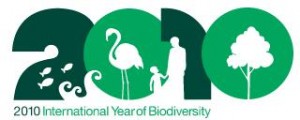 The United Nations General Assembly declared 2010 the International Year of Biodiversity. The goals of this special year are to raise awareness of the importance of biodiversity, highlighting the fact that it continues to be lost, and to celebrate novel solutions being carried out around the world for its conservation and sustainable use, and the equitable sharing of the benefits from the use of genetic resources. The Year 2010 was chosen to coincide with the biodiversity target agreed by world leaders in 2002. During the Year scientists will report on a global trend on biodiversity.
The United Nations General Assembly declared 2010 the International Year of Biodiversity. The goals of this special year are to raise awareness of the importance of biodiversity, highlighting the fact that it continues to be lost, and to celebrate novel solutions being carried out around the world for its conservation and sustainable use, and the equitable sharing of the benefits from the use of genetic resources. The Year 2010 was chosen to coincide with the biodiversity target agreed by world leaders in 2002. During the Year scientists will report on a global trend on biodiversity.
^ http://www.cbd.int/2010/welcome/
 Convention on the Conservation of Migratory Species of Wild Animals (CMS; also known as the Bonn Convention)aims to conserve terrestrial, aquatic and avian migratory species throughout their range. It is an intergovernmental treaty concluded under the aegis of the United Nations Environment Programme (UNEP). Since the Convention’s entry into force, its membership has grown steadily to include 113 (as of 1 January 2010) parties from Africa, Central and South America, Asia, Europe and Oceania.
Convention on the Conservation of Migratory Species of Wild Animals (CMS; also known as the Bonn Convention)aims to conserve terrestrial, aquatic and avian migratory species throughout their range. It is an intergovernmental treaty concluded under the aegis of the United Nations Environment Programme (UNEP). Since the Convention’s entry into force, its membership has grown steadily to include 113 (as of 1 January 2010) parties from Africa, Central and South America, Asia, Europe and Oceania.
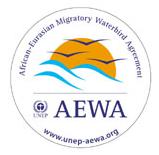 African-Eurasian Migratory Waterbird Agreement (AEWA)is an intergovernmental treaty developed under the CMS dedicated to the conservation of migratory waterbirds. The Agreement covers 255 species of birds, ecologically dependent on wetlands for at least part of their annual cycle. The treaty covers a large geographic area, including Europe, parts of Asia, Canada, the Middle East and Africa. So far 63 out of the 118 countries (as of 1 February 2010) in this area have become Contracting Parties to the International Agreement.
African-Eurasian Migratory Waterbird Agreement (AEWA)is an intergovernmental treaty developed under the CMS dedicated to the conservation of migratory waterbirds. The Agreement covers 255 species of birds, ecologically dependent on wetlands for at least part of their annual cycle. The treaty covers a large geographic area, including Europe, parts of Asia, Canada, the Middle East and Africa. So far 63 out of the 118 countries (as of 1 February 2010) in this area have become Contracting Parties to the International Agreement.
 BirdLife Internationalis a global partnership of conservation organisations that strives to conserve birds, their habitats and global biodiversity. BirdLife International has long been committed to the conservation of migratory birds and the habitats upon which they depend. The BirdLife Partnership is engaged in migratory bird conservation at numerous scales, from projects focused on individual species or key sites, to broader policy and advocacy work to promote migratory species conservation, and involvement in flyway-scale projects.
BirdLife Internationalis a global partnership of conservation organisations that strives to conserve birds, their habitats and global biodiversity. BirdLife International has long been committed to the conservation of migratory birds and the habitats upon which they depend. The BirdLife Partnership is engaged in migratory bird conservation at numerous scales, from projects focused on individual species or key sites, to broader policy and advocacy work to promote migratory species conservation, and involvement in flyway-scale projects.
 Wetlands Internationalis an independent, non-profit, global organisation, dedicated to the conservation and wise use of wetlands. Wetlands International works globally, regionally and nationally to achieve the conservation and wise use of wetlands, to benefit biodiversity and human well-being.
Wetlands Internationalis an independent, non-profit, global organisation, dedicated to the conservation and wise use of wetlands. Wetlands International works globally, regionally and nationally to achieve the conservation and wise use of wetlands, to benefit biodiversity and human well-being.
 The Partnership for the East Asian – Australasian Flyway– Launched in November 2006, the Partnership is an informal and voluntary initiative, aimed at protecting migratory waterbirds, their habitat and the livelihoods of people dependent upon them. There are currently 21 partners including 10 countries, 3 intergovernmental agencies and 8 international non-government organisations. The Partnership provides a framework for international cooperation, including: (1) development of a Waterbird Site Network (for sites of international importance to migratory waterbirds), (2) collaborative activities to increase knowledge and raise awareness of migratory waterbirds along the flyway, and (3) building capacity for the sustainable management and conservation of migratory waterbird habitat along the flyway.
The Partnership for the East Asian – Australasian Flyway– Launched in November 2006, the Partnership is an informal and voluntary initiative, aimed at protecting migratory waterbirds, their habitat and the livelihoods of people dependent upon them. There are currently 21 partners including 10 countries, 3 intergovernmental agencies and 8 international non-government organisations. The Partnership provides a framework for international cooperation, including: (1) development of a Waterbird Site Network (for sites of international importance to migratory waterbirds), (2) collaborative activities to increase knowledge and raise awareness of migratory waterbirds along the flyway, and (3) building capacity for the sustainable management and conservation of migratory waterbird habitat along the flyway.
 The World’s Rarest is a not-for-profit initiative that aims to highlight the plight of the most threatened species on Earth and to raise funds to support their conservation. During 2010, the project will be focussed on birds and contribute to BirdLife International’s Preventing Extinctions Programme. The project is based on a prestigious international photo competition, with exciting prizes, entry to which is open to anyone. Images submitted to the competition will be feature in a new book entitledThe World’s Rarest Birds, which is due to be published by the not-for-profit UK publisher WILDGuides in 2011.
The World’s Rarest is a not-for-profit initiative that aims to highlight the plight of the most threatened species on Earth and to raise funds to support their conservation. During 2010, the project will be focussed on birds and contribute to BirdLife International’s Preventing Extinctions Programme. The project is based on a prestigious international photo competition, with exciting prizes, entry to which is open to anyone. Images submitted to the competition will be feature in a new book entitledThe World’s Rarest Birds, which is due to be published by the not-for-profit UK publisher WILDGuides in 2011.
^ http://www.theworldsrarestbirds.com/
© The Habitat Advocate Public Domain

